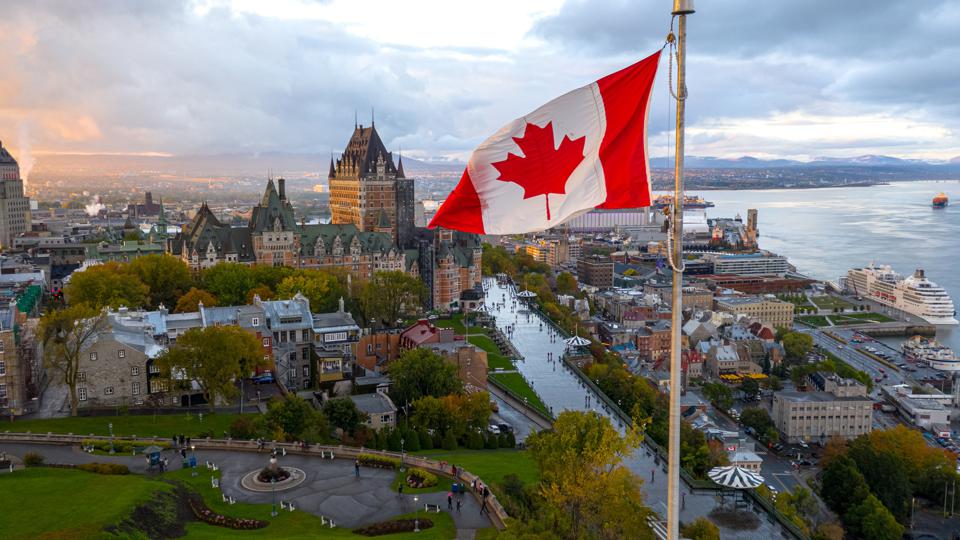Prime Minister Justin Trudeau’s Remarks on Trump’s Tariffs: Americans Realize the Cost of Protectionism
In recent years, one of the most significant trade disputes between Canada and the United States was sparked by former President Donald Trump’s decision to impose tariffs on Canadian steel and aluminum. In 2018, Trump, citing national security concerns, enacted a 25% tariff on steel and a 10% tariff on aluminum imports, targeting Canada—America’s largest trading partner—among others. This move was part of Trump’s broader “America First” trade policy, which sought to reduce U.S. reliance on foreign goods, protect American jobs, and boost domestic manufacturing.
For Canada, the tariffs were not only economically damaging but also deeply insulting, as Canada had long been one of the U.S.’s most reliable allies and trading partners. As the economic fallout of these tariffs spread, Prime Minister Justin Trudeau and his government were forced to navigate the resulting political and economic turmoil. Trudeau consistently pushed back against the tariffs, arguing that they were unjust, undermined decades of trade cooperation, and would ultimately harm both the U.S. and Canadian economies.
In 2024, several years after the tariffs were imposed, Trudeau revisited the issue in a statement that caught the attention of both Canadian and American audiences. He claimed that “Americans are now realizing that Trump’s tariffs on Canadian goods would make life a lot more expensive.” This statement, though brief, encapsulated the core of the economic argument that Trudeau and many trade analysts had made since the onset of the tariff dispute. In this article, we will explore Trudeau’s comments, analyze the broader economic implications of the tariffs on both Canada and the United States, and discuss how the trade relationship between the two nations continues to evolve.
The Background: Trump’s Tariffs on Canadian Steel and Aluminum
The story of Trump’s steel and aluminum tariffs began in March 2018, when the U.S. president announced that he would impose steep tariffs on steel and aluminum imports under the provisions of Section 232 of the Trade Expansion Act of 1962. Section 232 allows a president to impose tariffs if imports are believed to threaten national security. Despite the fact that Canada had been a longstanding ally of the U.S., Trump invoked this provision, arguing that foreign steel and aluminum posed a threat to the American military and industrial base.
Trump’s decision to impose tariffs on steel and aluminum was not limited to Canada, but Canada was particularly affected due to its status as the largest supplier of steel and aluminum to the U.S. Steel, aluminum, and other metals are integral to various sectors of the U.S. economy, including defense, manufacturing, and infrastructure. The tariffs were aimed at restoring jobs in the U.S. manufacturing sector, which Trump claimed had been devastated by unfair trade practices and cheap imports.
From the outset, the Canadian government expressed strong opposition to the tariffs. Prime Minister Justin Trudeau, along with his Foreign Minister Chrystia Freeland, pushed back, arguing that the tariffs were unfair and based on a misguided interpretation of Canada’s relationship with the U.S. Not only did Canada export steel and aluminum to the U.S. at competitive prices, but the materials were essential for U.S. defense industries, and Canada’s steel was used in a wide range of strategic sectors.
Trudeau and his government criticized the Trump administration’s use of national security as a justification for tariffs, a move that felt especially paradoxical given the close relationship between the two nations. In response, Canada imposed retaliatory tariffs on $16.6 billion worth of U.S. goods, including steel, aluminum, and agricultural products, as a symbolic act of protest and as an economic countermeasure to protect Canadian industries.

The Economic Fallout: Effects on Canada and the U.S.
The imposition of tariffs created significant economic disruptions for both Canada and the United States. On the Canadian side, the tariffs were a direct blow to industries reliant on exports of steel and aluminum, as well as businesses that relied on these raw materials for manufacturing. Canadian steel producers, many of which had long-standing relationships with U.S. manufacturers, faced reduced sales and uncertain market conditions as a result of the trade restrictions. The ripple effects of these tariffs were felt across the Canadian economy, as supply chains were disrupted, costs increased, and production slowed in certain industries.
For American industries, the situation was equally concerning. Although the tariffs were intended to protect American steel and aluminum manufacturers, the higher prices for these imported materials led to higher costs for industries that rely on steel and aluminum. The automotive, aerospace, and construction industries, which depend heavily on these metals, found themselves facing increased production costs. Manufacturers had to either absorb these costs, passing them on to consumers, or reduce their output to stay competitive. The result was a rise in prices for American-made products, impacting both consumers and businesses alike.
By the summer of 2018, the economic impact of the tariffs was already becoming clear. The U.S. Trade Representative estimated that the tariffs on steel alone would cost American consumers around $900 million per month. Some studies predicted that the overall economic impact of the steel and aluminum tariffs could lead to job losses in the U.S. manufacturing sector, even as other sectors, such as construction and automotive, faced higher costs due to the tariffs on raw materials.
Trudeau’s assertion that Americans were beginning to realize the negative consequences of these tariffs was not unfounded. American consumers saw a sharp rise in the cost of goods that depended on steel and aluminum, from automobiles to appliances to consumer electronics. American businesses found themselves facing higher input costs, which often had to be passed on to consumers in the form of higher prices.
Trudeau’s Recent Comments: Americans Realizing the Costs of Protectionism
In 2024, Prime Minister Justin Trudeau addressed the long-lasting effects of Trump’s tariffs and remarked that “Americans are realizing that Trump’s tariffs on Canadian goods would make life a lot more expensive.” His comments were aimed at shedding light on the unintended consequences of protectionist trade policies that prioritize short-term domestic gains over the long-term health of the broader economy.
For Trudeau, the economic logic behind these tariffs was clear: while they were intended to protect American jobs in the steel and aluminum industries, they had the opposite effect on many other sectors. Higher costs for steel and aluminum rippled through the supply chains of various U.S. industries, driving up prices for everything from cars to home appliances. In turn, American consumers faced higher prices on goods they regularly purchased, which ultimately undermined the purchasing power of everyday Americans.
Trudeau’s statement also reflected a broader shift in the trade policy debate in the United States. In the years since the tariffs were imposed, economists and trade experts have consistently pointed out that tariffs often lead to higher costs for consumers, as they raise the price of raw materials used in manufacturing. As time has passed, it has become increasingly clear that while certain industries might have gained from the tariffs, the overall impact on the U.S. economy was more detrimental than anticipated.
Trudeau’s comments also pointed to the broader economic principles of free trade, which advocate for removing barriers to trade in order to lower prices and increase competition. Under free trade principles, economies can specialize in the goods and services they produce most efficiently, leading to lower costs for consumers and higher economic growth. In the case of Trump’s tariffs, however, the opposite effect occurred, as U.S. businesses were forced to pay more for Canadian goods, which they relied on for their own production processes.

The Shift in U.S. Trade Policy: A Move Toward Multilateralism and Collaboration
Trudeau’s remarks come at a time when global trade dynamics are shifting. After the end of Trump’s presidency, President Joe Biden took office and ushered in a new era of trade relations. Biden’s approach to trade policy has emphasized multilateralism and a return to cooperative relationships with key allies, including Canada. Under Biden, the U.S. has worked with Canada and Mexico to renegotiate the North American Free Trade Agreement (NAFTA), now known as the United States-Mexico-Canada Agreement (USMCA), with the aim of modernizing the trade framework and ensuring greater protections for labor and environmental standards.
The Biden administration’s more cooperative approach contrasts sharply with Trump’s protectionist stance, which alienated many of the U.S.’s closest trading partners. While Biden has not completely undone the legacy of Trump’s tariffs, he has expressed a desire to work with allies to address global trade challenges, such as China’s unfair trade practices, without resorting to unilateral tariffs.
For Trudeau, the shift in U.S. trade policy is seen as a positive development. The new trade environment allows for a more constructive dialogue between Canada and the U.S., one that seeks to avoid the kind of disruptions caused by tariffs. Trudeau has long argued that Canada-U.S. trade should be based on mutual respect and cooperation, rather than unilateral actions that disrupt the economies of both countries.
Canada’s Position in Global Trade: A Focus on Diversification and Resilience
The tariff dispute with the Trump administration was a defining moment for Canadian trade policy. It highlighted the vulnerabilities of relying too heavily on a single trading partner, especially one that could, as evidenced by Trump’s tariffs, turn protectionist without warning. In response, Canada has taken steps to diversify its trade relationships, seeking new opportunities in emerging markets such as China, India, and the European Union.
Trudeau’s government has worked to strengthen trade ties with other global powers through agreements such as the Comprehensive and Progressive Agreement for Trans-Pacific Partnership (CPTPP) and the Canada-European Union Comprehensive Economic and Trade Agreement (CETA). These trade deals have helped to cushion Canada from the economic shocks caused by U.S. protectionism and have positioned Canada as a leader in advocating for free trade and open markets.
At the same time, Trudeau has emphasized that Canada remains committed to maintaining a strong and mutually beneficial trade relationship with the United States. Despite the challenges presented by Trump’s tariffs, Canada and the U.S. share a deep economic integration that is unlikely to change overnight. The two countries continue to work together on issues ranging from energy trade to security, and their economic interdependence remains a key feature of the North American landscape.
Conclusion: The Legacy of Trump’s Tariffs and Trudeau’s Response
Prime Minister Justin Trudeau’s recent comments about the long-term impact of Trump’s tariffs on Canadian goods provide an insightful reflection on the broader consequences of protectionism. While the tariffs may have been intended to protect American industries, the economic reality is that they ultimately increased costs for American consumers and businesses, leading to higher prices and reduced economic efficiency.
Trudeau’s leadership during the tariff dispute underscored Canada’s resilience in the face of adversity. By emphasizing the economic costs of protectionism and advocating for a more cooperative and multilateral approach to trade, Trudeau helped to guide Canada through one of its most challenging periods in recent trade history. As both countries continue to navigate the complexities of global trade, the lessons learned from the tariff dispute will undoubtedly shape future policies and trade relationships.












